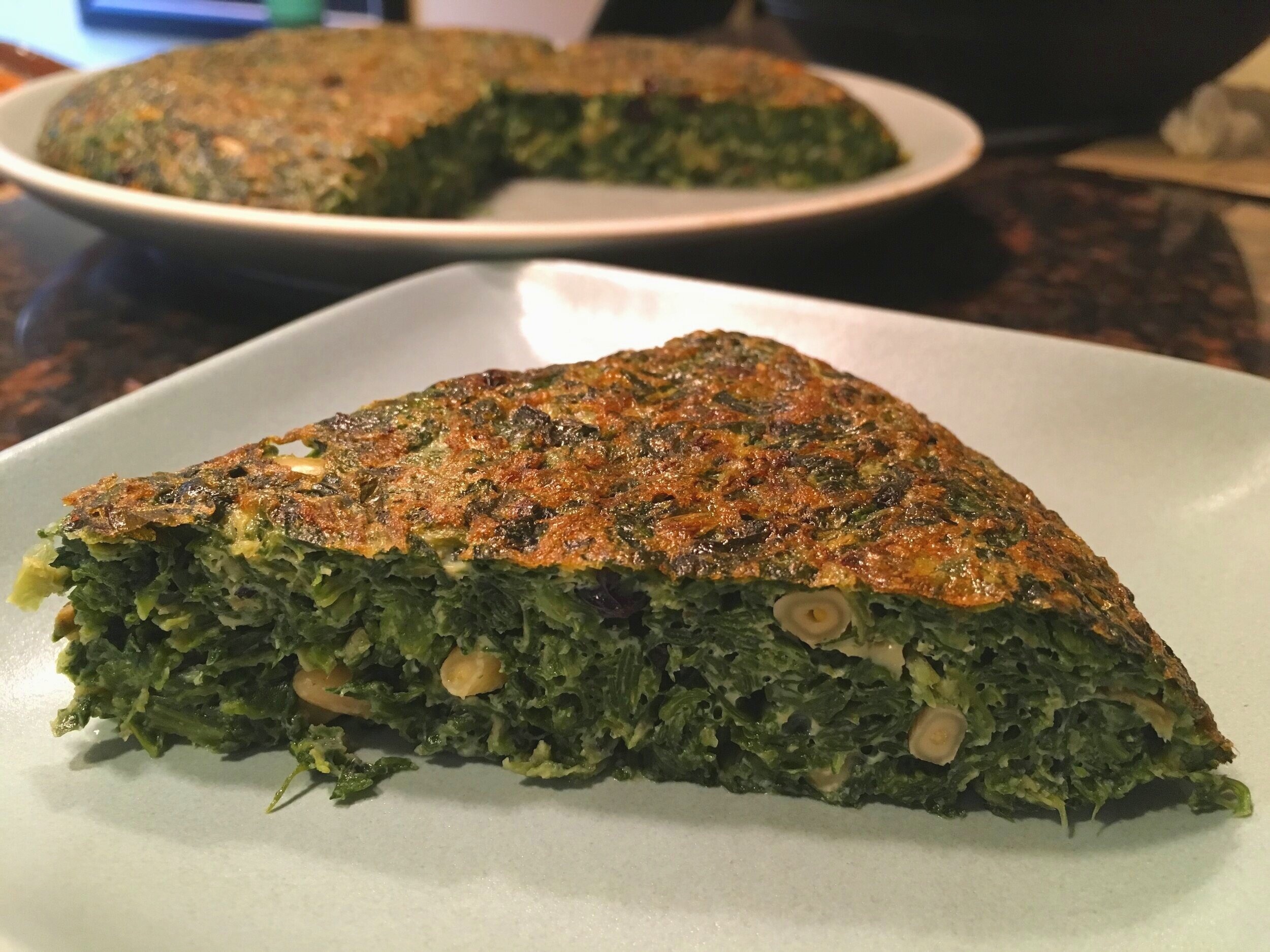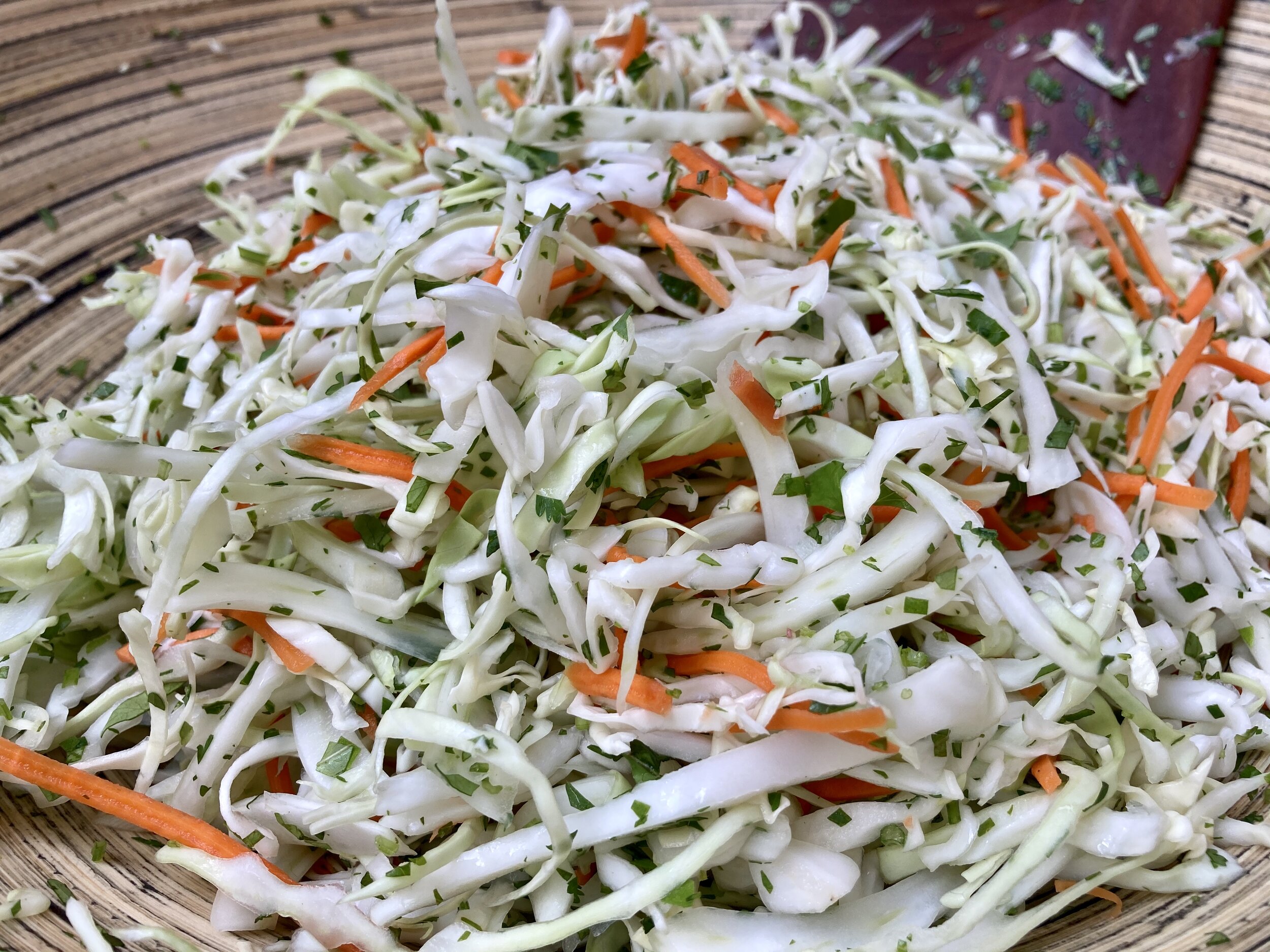Vegan-Vegetarian in Barcelona?
Behold, the Catalan Spinach Omelet
Catalonia’s a pretty carnivorous place. Most of the famous local specialties have pork, fish, and/or seafood in it, which means a lot of vegans and vegetarians come away disappointed in the food scene they’d heard so much about. It’s pretty hard to find vegetarian main courses in Barcelona, but there are a number of great plant-based dishes worth seeking out even if you’re not vegan or vegetarian.
My favorite simple ones are in the Hedonism Eats Barcelona dinner party book, alongside some meaty/fishy delights to represent the core culinary culture. But if you don’t eat meat or fish (or you just want a few more veggies on your menu), you need this recipe for a Catalan truita (a.k.a Spanish tortilla).
The truita is like a cross between an omelet and a frittata, loaded with whatever cooked veggies you like. Potato is the most common, but this one is stuffed with a very Catalan spinach preparation seasoned with pine nuts, currants, and olive oil.
It’s tasty served hot, cold, or room temp, and makes an awesome appetizer, side or main course. In other words: this recipe’s a keeper.
There are links in the recipe below to products I recommend. As an Amazon Associate, I may earn a commission (at no additional expense to you) from qualifying purchases.
Truita d’Espinacs a la Catalana | Catalan Spinach Omelet
Serves 6-8 as part of a larger dinner party menu.
The Catalan word for a Spanish tortilla-style omelet is truita – and yes, they do use the same word for trout. I haven’t been able to find a credible explanation of why. Just know there is no trout (or meat, or cheese) in this recipe – just eggs and spinach in a classic Catalan treatment. If you’re vegan or don’t eat eggs, JUST makes a versatile vegan egg substitute you should try.
Personally, I think this dish tastes best when you make it the day before – it gives the currants’ tangy sweetness time to infiltrate the whole dish – but you can certainly eat it freshly made. It also keeps a few days in the fridge, no problem.
Ingredients:
2 pounds spinach, fresh or frozen
¼ cup dried currants
2 tsp sherry vinegar
2 Tbsp very hot water
6 eggs (or 1½ cups JUST Egg vegan egg substitute)
salt, pepper
3 Tbsp olive oil, separated
¼ cup pine nuts
Prep the Spinach.
If your fresh spinach isn’t already washed, wash it well. (Don’t bother drying it.)
If your spinach is frozen, thaw it; then squeeze out as much water as you can.
Remove any thick, hard stems that might be in there. You just want the leaves and tender stems.
Soak the Currants.
Put the ¼ cup of currants in a small bowl. Pour over the 2 tsp of sherry vinegar and 2 Tbsp of very hot water, and give it a quick stir. Cover the bowl and leave it alone to soak.
Cook the Spinach.
Put the spinach in a big, wide pot. Cover the pot (only if using fresh spinach; leave it uncovered for frozen) and cook at medium-high heat – stirring often – until the spinach has released its water and becomes tender. It should only take a few minutes.
Put your cooked spinach in a colander in the sink to drain and cool down. Don’t wash your cooking pot just yet . . . .
Prep the Eggs.
While the spinach is cooling, break 6 whole eggs and put them into a medium or large mixing bowl. Make sure no eggshell bits find their way in. Season the eggs generously (more than you usually would) with salt and pepper. Whisk the eggs just until they’re combined.
Season the Spinach.
Once your spinach has cooled down enough to touch, press it with your hands to extract as much water as possible. Put the cooked spinach back into the big pan you cooked it in, along with the soaked currants (leave their soaking liquid behind, to use for livening up other veggies), the ¼ cup pine nuts, and 1 Tablespoon of olive oil. Season generously with salt and pepper, and stir everything around with a fork until all the ingredients are evenly mixed.
Then, add the spinach mixture to the bowl with the beaten eggs and stir everything with the fork until the egg is completely mixed in. The mixture will be very green, and very thick.
Cook the Truita.
Warm 2 Tbsp olive oil in a 12-inch, oven-proof* non-stick skillet over medium-low heat. Carefully pour all of the egg & spinach mixture in, and use a spatula to swirl in the extra olive oil and smooth everything down in an even layer. Make sure the greens are everywhere – you don’t want lumps of spinach on top, or spinach-less areas of pure egg.
Cover the skillet fully, turn the heat down to low, and leave it alone for 10 minutes. Set a timer to be sure. Unless the pan is smoking ominously, do not peek until 10 minutes have elapsed. While you’re waiting, preheat the broiler and position a rack as close to the broiler element as you can and still fit the skillet (and its handle) underneath without touching the roof or heating element. Wash your dishes. Clean up the kitchen. Just don’t open the lid of the pan until the timer goes off.
If the top is still raw (liquid) after your mandatory 10 minutes, finish cooking the truita under the broiler – with the lid off, of course! – for 2-3 minutes. You’ll know it’s cooked when the egg portion doesn’t feel wet to the touch – it will be soft, but no longer liquid. Carefully take the pan out of the oven with a kitchen towel or hot mitt, and let it relax 1-2 minutes out of the heat before you do anything to it.
* If you don’t have an oven-safe non-stick skillet like this one, now you know what to ask Santa for this Christmas! Until it arrives, though, you can cook the top of your truita the traditional way – by flipping the half-cooked truita out onto a plate as described in the next step, then sliding the truita back into the pan with the runny side down to finish cooking 1-2 minutes on the stove. (Just make sure you wash the plate before you put the fully-cooked finished product on it.)
Unmold the Truita.
Carefully run a spatula around the edge of the truita to loosen it. Put a full-sized dinner plate upside down on top of the skillet and hold it there with one hand pressed flat in the middle of the plate. Hold the pan in your other hand.
In one quick motion, carefully flip the pan and the plate so you’re holding the skillet upside down on top of the plate, with the two still pressed together. The truita should pop right out of the pan and onto the plate. If it sticks to the pan, set the plate-pan assemblage down on the counter with the plate underneath and upside-down pan on top. Lift the pan slightly away from the plate and use your spatula to release the stuck portions. Decide which side is prettier (sometimes the browned side is lovely, other times it’s not), and present it that side up.
Let the truita cool to room temperature before cutting and serving. You can slice it like a pie into individual wedges for each person, or cut it into little cubes to enjoy as a finger-food appetizer or tapas dish. With a dab of romesco sauce and a leftover piece of pa’amb tomaquet, this dish is meatless Catalan heaven.
Add it to your Barcelona Calçotada dinner party menu, or just make it for yourself!













